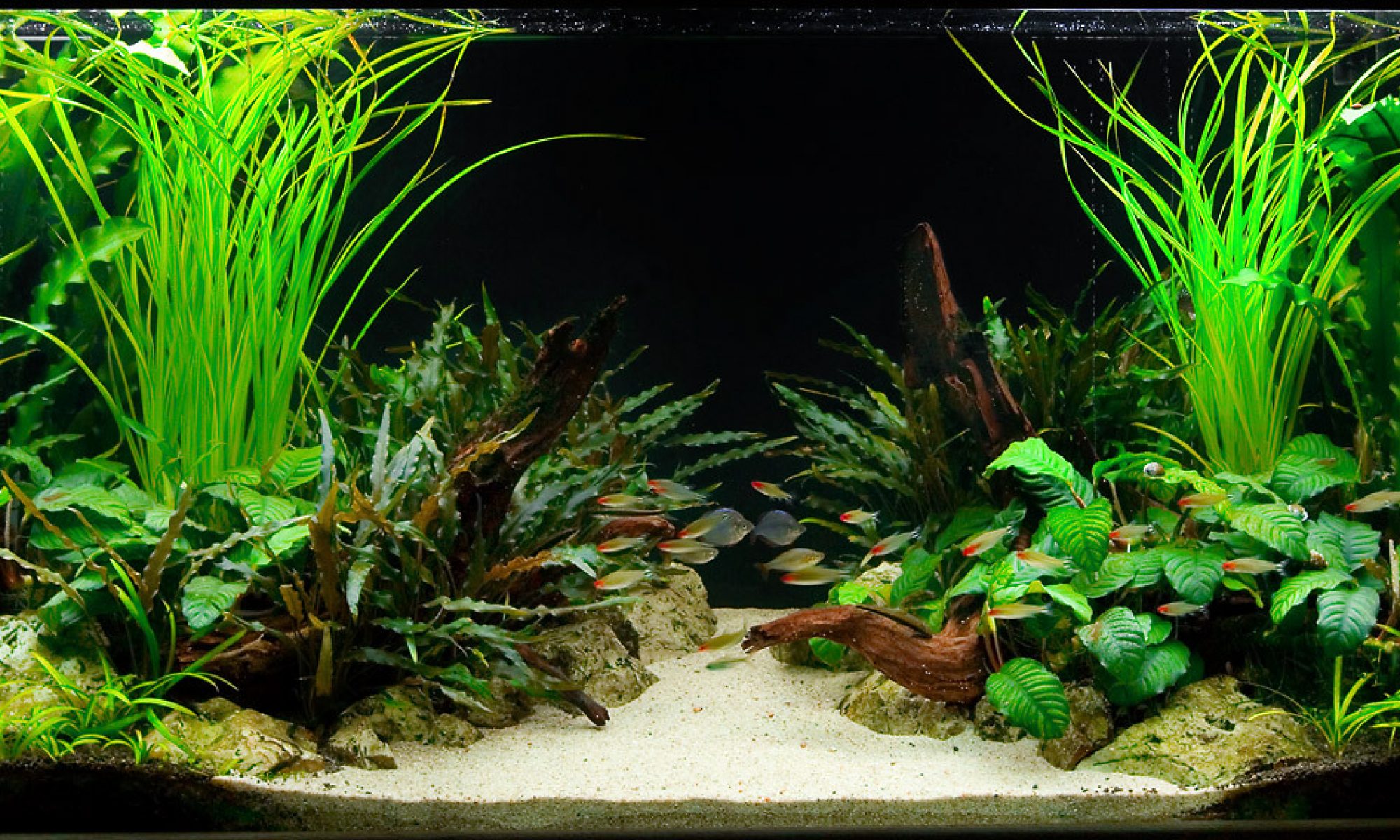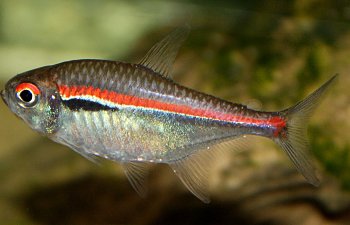The Scarlet Tetra is a stunning characin known from tropical savannah creeks in Amapá in north-eastern Brazil. This is a peaceful shoaling species, ideal for mature softwater aquaria.
Details
| Type | Tetra |
| Family | Characidae |
| Species | Hyphessobrycon amapaensis |
| Synonyms | Red Line Tetra |
| Origins | Brazil |
| Sexual Dimorphism | Mature females will be much fuller bellied compared to the males. Females also attain a slightly larger length. |
| Length | 4.0 cm |
| Shoaling | Yes |
| Temperature | 24 - 28 deg C |
| Water parameters | pH 5.5 - 7.0, dH 1 - 8 |
Care
The Scarlet Tetra is a stunning characin known from tropical savannah creeks in Amapá in north-eastern Brazil. This is a peaceful shoaling species, ideal for mature softwater aquaria. The tank should be furnished with plenty of driftwood to create lots of shady areas, and the tannins that are gradually released from the wood should help to acidify the water whilst giving it a natural, clear tea-colour. Peat filtration can also help in this respect. Although plants are not found in abundance in the natural waters of this species, a moderate amount of planting will be appreciated and will help to make the fish feel more secure. Lighting should not be too bright (tannins and floating plants can help to diffuse brighter lighting), and darker substrate and background choices will help to show off their exquisite colours. Scarlet Tetras should always be maintained in good sized groups, 6 would be the minimum recommended, 10+ would be better. Not only will the fish feel more secure, but this will result in a far more effective, natural-looking shoal. Tankmates should also be small and peaceful, as these fish are easily intimidated by larger or more rowdy species. Ideal tankmates could include Corydoras catfish, small dwarf cichlids such as Apistogramma or Mikrogeophagus, pencilfish, and some of the smaller Loricariidae (suckermouth catfish). Scarlet Tetras are currently being bred in good numbers in Europe and so are becoming more readily available in the trade. You may also see this fish sold as the Amapá Tetra or Red Line Tetra.Feeding
Offer a varied diet including a good quality flake, micropellets, and small frozen foods such as bloodworm, white mosquito larvae, vitamin-enriched brineshrimp, and daphnia.Breeding
This egg-laying species is relatively easy to breed, and in the confines of a well planted tank, you may see small numbers of young appear from time to time. However if you wish to raise a good number of fry, a small separate breeding aquarium should be set up for the purpose. This tank should also contain soft, acidic water, and the temperature should be set towards the high end of their preferred range. Prior to the spawning attempt, condition your fish on plenty of small meaty live or frozen foods. Clumps of Java moss or a few bunches of fine-leaved plants should be added to the breeding tank to give the fish somewhere to scatter their eggs, and very gentle filtration should be provided via an air-driven sponge filter. No dedicated lighting should be used, as eggs and fry tend to be light sensitive. Acclimatise a mix of both sexes across to the new tank very carefully during the evening, and in the morning, when sunlight hits the tank, spawning should commence. The parents should be removed immediately after spawning ceases as they will predate on the eggs. Some aquarists like to use a fine mesh in the tank so that the scattered eggs can fall to safety, away from the attention of the adult fish. Ideally try and keep the tank in darkness once eggs have been scattered, to protect them and the resultant sensitive young fry from being damaged by bright light. The eggs should hatch within 24-36 hours (temperature dependent) and the young will initially feed from their yolk sacs for a short time. Once free-swimming, microscopic foodstuffs such as infusoria/Paramecium should then be offered, followed by baby brineshrimp (Artemia nauplii) and microworm as they grow.

